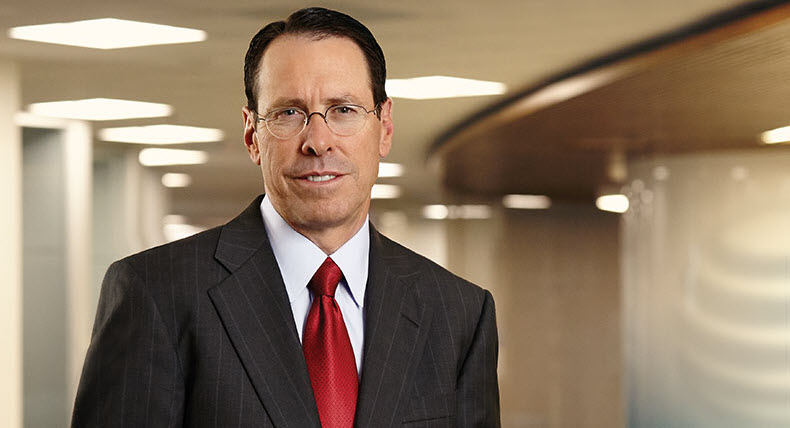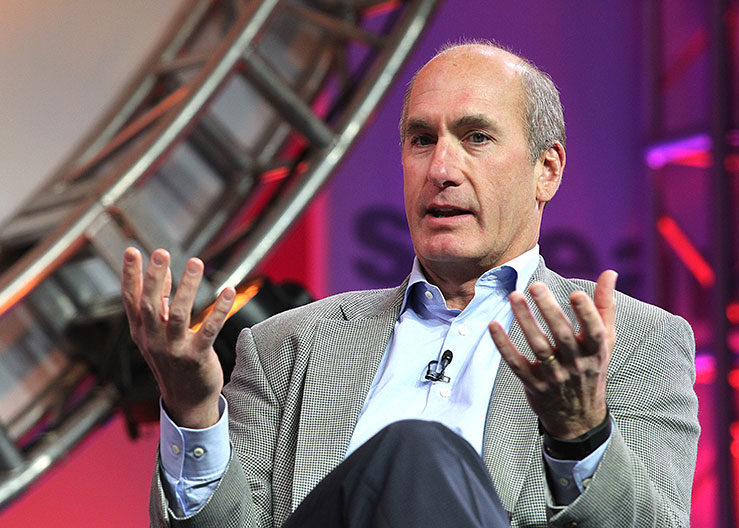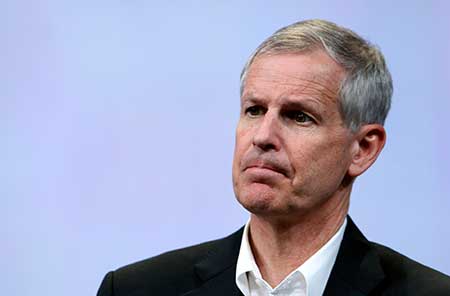Getting Rid of DirecTV Won’t be So Easy
It was probably a given that AT&T would have to evaluate its options for DirecTV, in light of the lengthy letter one of its shareholders sent to the telco’s board of directors earlier this month, basically putting the 2015 purchase of the satellite giant on par with the introduction of New Coke, the smokeless cigarette and other equally terrible business decisions. But with the cat out of the bag -- the Wall Street Journal reported that AT&T is considering selling, spinning off or maintaining the status quo for the asset -- the consensus seems to be building that AT&T will have to do something. Just what still remains to be seen.

Hedge fund Elliott Management started this whole mess on Sept. 9, when it revealed that it had a $3.2 billion stake in AT&T (still well under 3% of outstanding shares) and fired off a letter to AT&T’s board criticizing chairman and CEO Randall Stephenson’s costly foray into the media business, particularly singling out DirecTV as an asset that should be disposed.
Elliott’s letter was typical of a lot of outsiders that buy into companies on a downturn -- it criticized management for embarking on the media buying spree -- AT&T has spent more than $150 billion in the past four years on the purchase of DirecTV and Time Warner Inc. -- lamented the stock price -- at between $36 and $37, Elliott says the stock is severely undervalued -- and criticized personnel moves.

Of particular ire was the decision to name WarnerMedia chief John Stankey as chief operating officer of AT&T. Elliott was perturbed that instead of conducting a thorough search for the most qualified executive available, it instead named Stankey -- who already was running a WarnerMedia, “itself a massive and very different business that clearly requires a full-time manager,” and who “would now also be responsible for an additional $145 billion of revenue as the president and COO of the entire company.”
Elliott mapped out a multi-point plan to restore AT&T to its former glory by switching its focus back to telecommunications, divesting the DirecTV business and other non-core assets, reducing inefficiencies and enhancing leadership and oversight. Follow those steps, Elliott said, and AT&T could be a $60 stock -- a 65% premium to its current price.
Related: AT&T Needs to Kill DirecTV to Save It
At the Goldman Sachs Communacopia conference Tuesday, Stephenson hinted that AT&T would look into Elliott’s suggestions, adding that they were a “mixed bag.”
Let’s for a moment forget that improving inefficiencies and getting rid of under-performing assets isn’t exactly outside of the box thinking -- what business in its right mind wouldn’t want to do that? But don’t forget that a lot of people didn’t like the DirecTV deal back in 2015 -- it was a declining asset, the price was too high, and it wasn’t really clear what AT&T had in mind for the satellite business.
Fast forward four years and those issues are even more pressing -- DirecTV has dropped about three million subscribers since 2015, the migration to its streaming service AT&T TV Now (formerly DirecTV Now) has peaked at about 1.6 million customers and is falling and its upcoming IPTV offerings -- AT&T TV and HBO Max -- are facing uncertainty and heightened competition from The Walt Disney Co. (Disney+), Apple (Apple TV Plus) and NBC Universal’s upcoming Peacock streaming service.
DirecTV caused a bit of a panic in Q2 when it lost nearly one million satellite TV and OTT subscribers, most of whom the company said were low margin customers rolling off deep discounts. The company has said it expects to lose another 300,000 to 350,000 pay TV subscribers in Q3, which added more fuel to the fire.
But what a lot of people are forgetting is that maintaining the satellite status quo was never part of AT&T’s strategy with DirecTV in the first place. AT&T knew the satellite business was declining when they bought it -- they’d have to be blind not to see it -- but they didn’t care. What attracted them to DirecTV was its programming contracts -- which it could use as new distribution products were created -- and a customer base that could be migrated to those new products. The real value is in the people connected to AT&T’s offerings -- Stephenson estimated that number is about 170 million people across wireless, broadband and pay TV platforms -- and how they could monetize them through targeted advertising.
Veteran network systems executive and Connolly Network Insight chief Paul Connolly, who just issued his second report on AT&T -- AT&T Media Strategy Update 2019 -- said the ad business is at the center of AT&T’s media strategy.
With the national TV ad business at about $70 billion -- around the same as the industry generates from monthly pay TV subscription fees -- it’s a huge market and one that AT&T has been gearing up to address for awhile.
“I’m a firm believer that if they can pull off what the original plan was to do, which was to finally figure out how to do targeted advertising, they could change the economics pretty significantly,” Connolly said. “The question is how real is it? How close are they? And when can they get it rolling?”
To Connolly, AT&T’s moves over the past four years have all led to this point -- the launch later this year of AT&T TV, a thin-client IP-based offering that will offer new capabilities and will likely be priced aggressively, which should help attract and retain customers.
“I think they have a tool now to really stem the cord cutting,” Connolly said. “It allows them to basically control the home, show the AT&T screen, pull in DirecTV, pull in all the other OTT apps, has a Google Assistant voice remote and all of the Google Play Store apps. It’s like a service provider offering. It’s not an OTT offering, but it happens to run over IP streaming.”
To me, AT&T has always seen DirecTV as the means to a goal, not the end-all, be-all. Initially, the move was to migrate its wireline U-verse pay TV customers to DirecTV, and later to migrate more price-conscious satellite customers to the AT&T TV Now OTT service. The next step will be to migrate more pay TV customers to AT&T TV.
But that won’t happen overnight. And remember, AT&T didn’t get into the TV distribution business to get into price wars with Dish and Comcast. The goal is advanced advertising, but they only get there if they can keep most of those 170 million relationships. Losing or selling off 18 million DirecTV customers doesn’t help. In fact, it might collapse the whole model.
Granted, the ad model is pretty risky too. The industry has been waiting for targeted advertising to take hold for more than a decade, to no avail. But maybe, just maybe, technology and viewer habits have caught up to each other to make this the year -- or the year prior to the year -- for targeted ads to plant its flag in the advertising space.
“They could tilt the economics in favor of more advertising revenue versus subscription revenue,” Connolly said. “But if you don’t have the subscriber revenue, you don’t have the customers to do the targeting on.”
So that leads us to what will AT&T do? In a research report Thursday, Barclays media analyst Kannan Venkateshwar said the company has four options -- a sale, a split, a spin or a joint venture.
The possible sale of DirecTV brings up past memories of attempts to combine the country’s largest satellite TV service provider with it rival Dish Network, a pairing that some believe is more likely today than in the past, mainly because of the emergence of over-the-top competition and the steady decline of the satellite business.
But even Dish Network chairman Charlie Ergen, who would benefit from a DirecTV pairing, thinks it’s a long shot.

At the Goldman Sachs Communacopia conference Tuesday, Ergen said that although Dish “looks at everything” and a pairing would make strategic and economic sense, he doubted it would pass the regulatory test.
Regulatory issues could be a real problem. It’s what derailed any hope for a DirecTV/Dish merger in the past, and though there is a feeling that the current administration would look more favorably on a deal, Venkateshwar wrote that confidence might be misplaced.
He noted the difficulty that AT&T had in getting its merger with Time Warner Inc., approved -- the U.S. Dept. of Justice tried to block the deal twice in federal court -- President Trump’s ongoing Twitter battle with AT&T’s CNN news operations -- which he regularly calls “fake news” -- and just plain old antitrust law.
Combining DirecTV and Dish would have tremendous synergies -- and create a satellite company with about 30 million subscribers, tops in the pay TV universe -- but it would also remove the only viable competitor in most rural markets. And without a broadband product to bundle with video, combining the two would in some eyes merely hold off the inevitable.
Related: Can an AT&T-DirecTV Merger Fly?
In his note, Venkateshwar wrote that a valuation of DirecTV compared to AT&T’s purchase price -- $48.5 billion in 2015 -- could only serve to reinforce Elliott Management’s criticism that AT&T paid too much. Worse yet, Venkateshwar said not only would a valuation prove Elliott’s point that the move into entertainment was a mistake, it “would be implicitly perceived as an acknowledgement of this by the company.”
Federal approval would be difficult even in today’s environment because Dish and DirecTV overlap in about 30% of their respective footprints. While in the past those issues are usually cleared up by forcing divestitures, that also is problematic because “there are no obvious buyers of this base,” Venkateshwar wrote.
The analysts also wasn’t a big fan of the split-of and spin-off options -- while they would help reduce leverage, AT&T already has a plan to get to under 2.5 times leverage in the next few years.
That leaves a joint venture, which the analyst sees as an attractive path especially if DirecTV and Dish share common back end cost.
“This could involve not just combining the transmission infrastructure but also functions such as customer support, engineering functions and billing systems,” he wrote, similar to what Charter and Comcast have done with their wireless businesses.
Venkateshwar stressed that creating a joint venture won’t be easy, but that despite the “execution challenges, we believe both management teams have enough incentives to consider this possibility.” He estimated that a JV could save between $500 million and $1 billion in combined costs and could result in AT&T’s margins rising by 50 to 100 basis points.
In the end, the Barclays analyst said that selling DirecTV to Dish for cash would be the best, but said there is a low likelihood of that happening because of regulatory concerns, or splitting off the assets, which presents other problems like does it make sense to own content (Time Warner) if AT&T doesn’t own distribution?
Venkateshwar said ultimately, the best move may be to throw in the towel on media all together.
“...[W]e believe the right sequence for AT&T, if it does indeed intend to go down this path, would be to consider a sale of Turner first and then split DirecTV off,” Venkateshwar wrote. “It may even make sense to combine these two assets and then split it off to shareholders.”
But I think AT&T has another, even more likely option -- keeping DirecTV and moving forward with the strategy they intended. It’s either that or admit that the past four years were just a bad dream.
Multichannel Newsletter
The smarter way to stay on top of the multichannel video marketplace. Sign up below.
